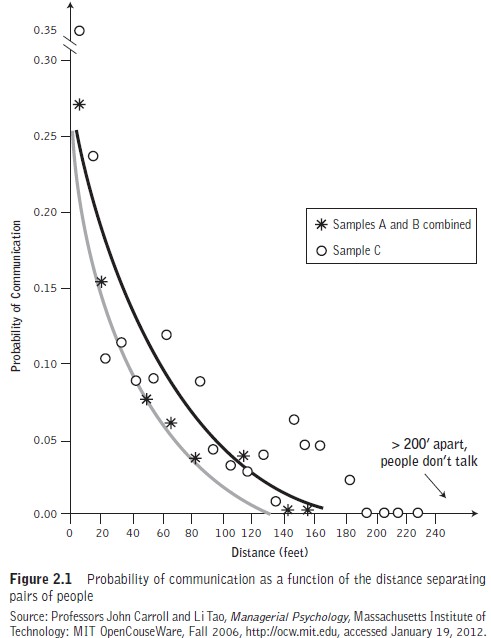How often do you communicate or collaborate with colleagues that sit next do you? What about colleagues that are down the hall? How about colleagues that are hundreds or thousands of miles away?
The farther employees are apart from each other the lower the chance that they will communicate and collaborate. One of the reasons why many of today’s collaborative tools are so valuable is because they allow this exchange of information regardless of where people are and these tools allow for this information exchange in a far more effective way than email. How distance impacts communication and collaboration was best understood by T.J. Allen who in 1977 wrote “Managing the Flow of Technology.” I actually talk about his work in my book in greater details but I wanted to share a visual just to provide some perspective.

In the visual above we can see that the probability of any type of communication drops as distance increases. In fact once the distance starts to cross 160 feet we’re basically talking about no communication or collaboration whatsoever. This is a very telling statistic especially when we look at how dispersed organizations are today. 160 feet in many offices can mean just going down the hall or going one floor down in an elevator.
Email isn’t really a solution for this either because you typically email people that you already know and you typically know people that are around you or people that you have to know in your department (which may be farther than 160 feet away). The challenge many organizations face today is how do they improve communication and collaboration across these boundaries? This is exactly why collaborative platforms are becoming so valuable to the enterprise (in addition to solving plenty of other challenges that organizations are faced with).
The next time someone asks you why employees don’t communicate or collaborate that often show them this visual.

Comments